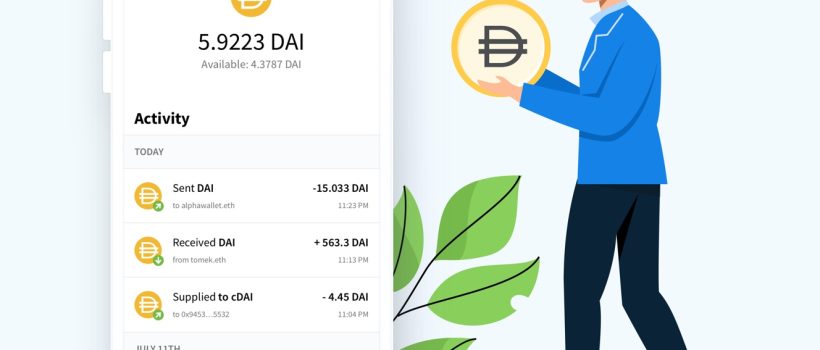Buying Dai is a great way to invest in the cryptocurrency market and take advantage of the potential upside of decentralized finance (DeFi). The process for buying Dai is fairly straightforward, but there are some important considerations to keep in mind. In this article, we’ll discuss how you can purchase Dai, what fees to expect, and the potential risks associated with investing in the currency.
The first step to purchasing Dai is selecting an exchange. There are many exchanges that list Dai as a trading pair, including Kraken, Binance, Coinbase Pro, and ChangeHero. Each exchange offers its own set of advantages and disadvantages – some have higher security measures while others have better liquidity. It’s important to research different exchanges before deciding which one you want to use. Once you select your desired exchange, you will need to create an account and verify your identity with them.
After signing up for an account on your chosen exchange and completing the necessary verification process, you will be able to purchase Dai with either fiat currencies such as USD or EUR or other cryptocurrencies like Bitcoin or Ethereum. Depending on which currency you choose as payment method, different fee structures may apply so make sure to check these before making your purchase.
Once your account is funded, you can buy Dai by placing an order on the exchange’s order books using limit orders or market orders (the former allows users to set their own prices while the latter executes at the prevailing market rates). It’s important to remember that when using limit orders users run the risk of having their orders filled slowly if there isn’t sufficient liquidity in the market at that time – this can lead to price slippage if markets move quickly against them. Market orders are generally faster but don’t guarantee a certain price for execution.
When dealing with any cryptocurrency it’s also important to keep track of both short-term price movements and long-term performance trends so that you can manage your investments accordingly – especially when it comes to DeFi tokens like Dai which are often highly volatile given their nature as collateralized stablecoins tied directly into crypto lending systems like Compound or MakerDAO. To stay up-to-date on both short-term price movements and long-term performance trends it’s recommended that investors utilize tools such as trading bots or charting programs so they can make informed decisions based off of data rather than emotion when managing their portfolios.
It’s also wise for investors who plan on holding onto their investments for a longer period of time be aware of specific rules related to taxes since different countries may have various regulations concerning digital assets – this includes information about filing capital gains taxes or declaring income derived from cryptocurrency transactions. As always when investing in any type of asset it’s important do due diligence before committing funds since all investments carry risk no matter how large or small they may be – however if done correctly investing in DeFi projects like Dai could potentially result in significant returns over time given its underlying technology and current popularity within crypto circles.
In conclusion, buying Dai is an easy process once you know how each exchange works and what fees apply depending on which currency you use as payment method – it’s just important for investors doing so remember to consider risks associated with DeFi tokens like volatility and lack of regulation outside traditional financial institutions; additionally it’s helpful for investors familiarize themselves with tax laws related digital assets depending on where they reside in order ensure they remain compliant with local regulations while taking advantage of opportunities presented by decentralized finance projects like MakerDAO & Compound which have enabled increased access more people than ever before around world invest cryptocurrencies such as Dai without incurring legacy banking costs usually associated traditional investments vehicles such stocks & bonds.
